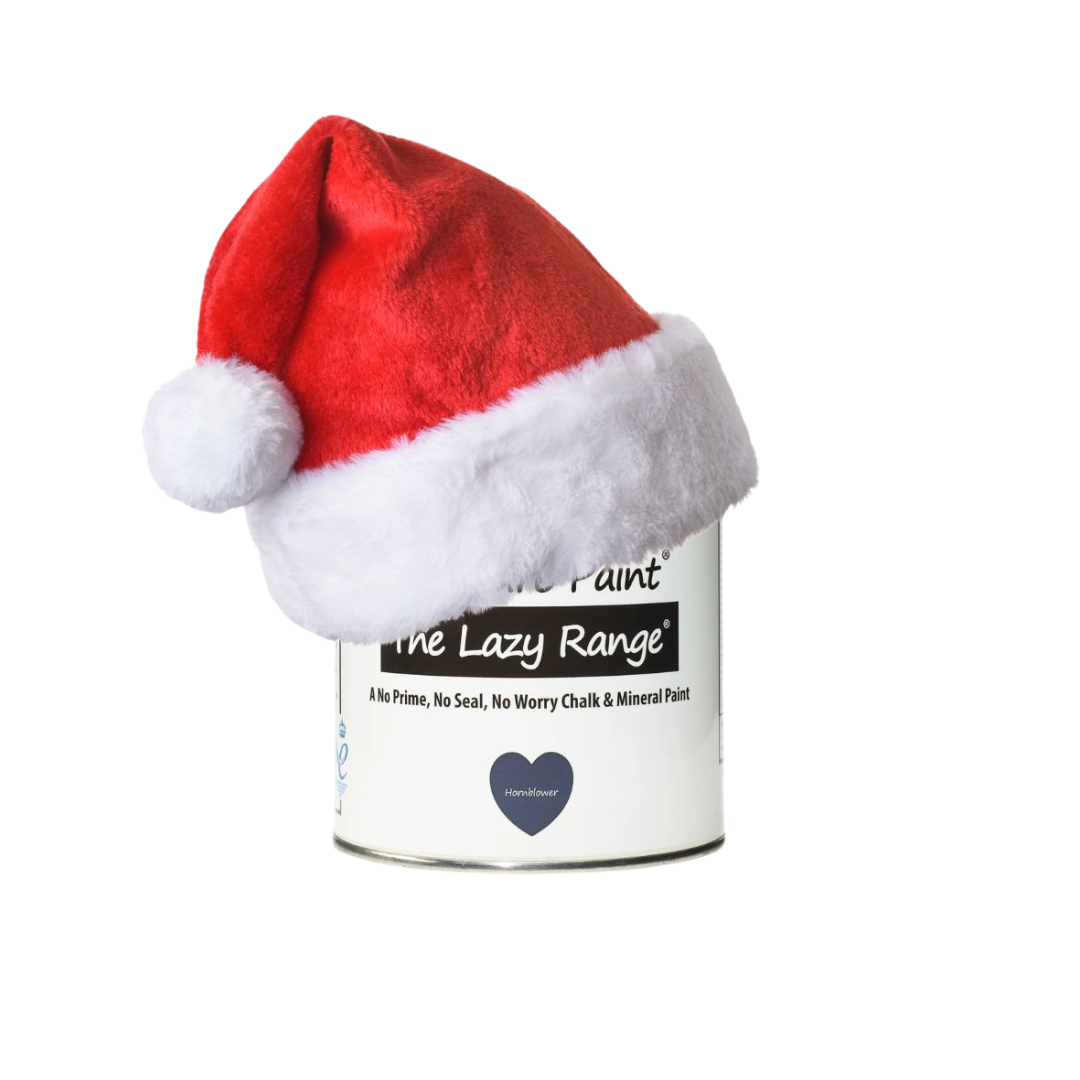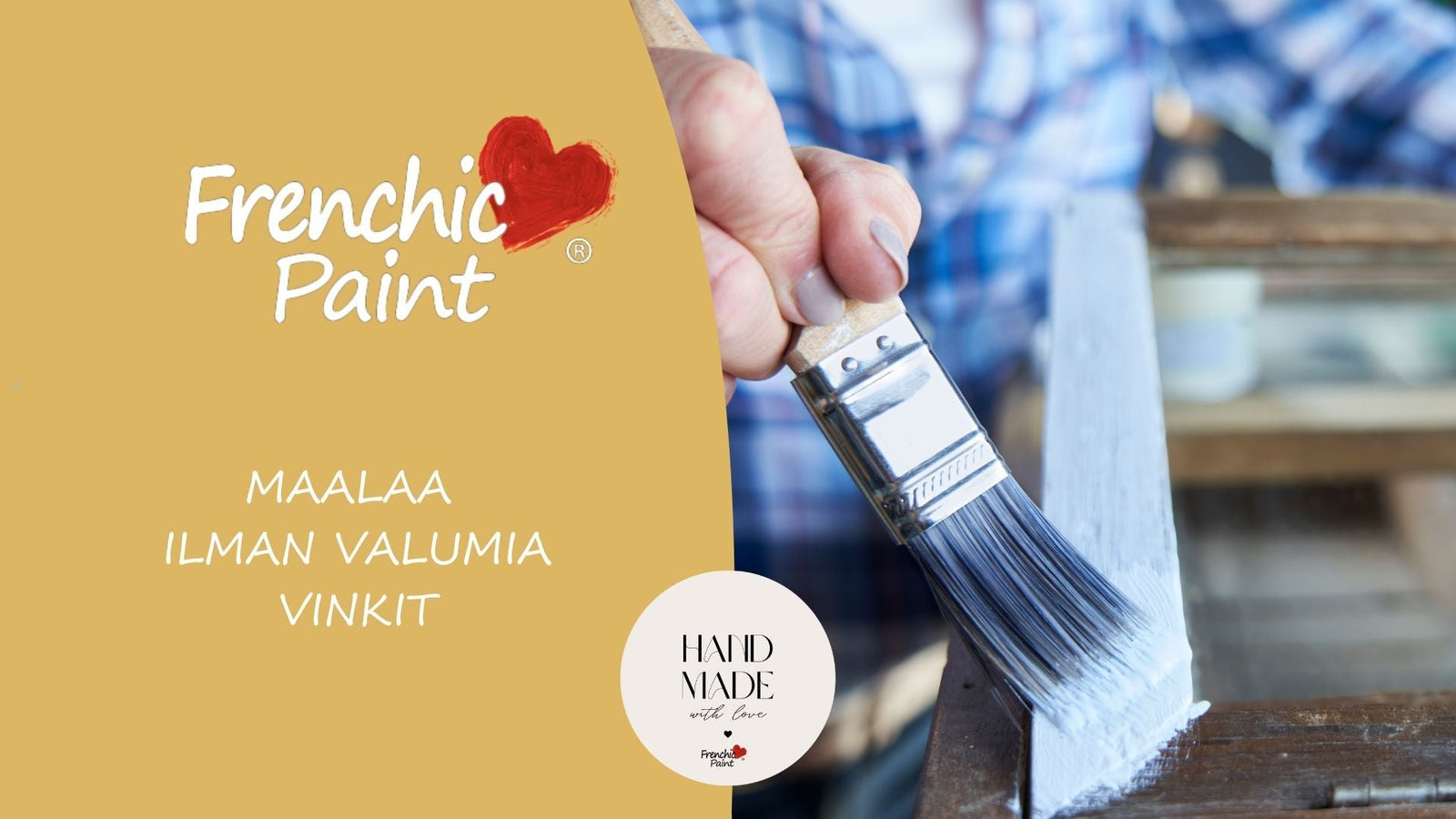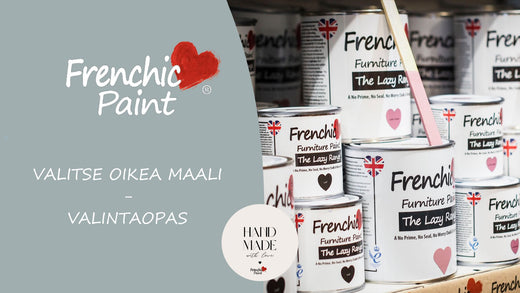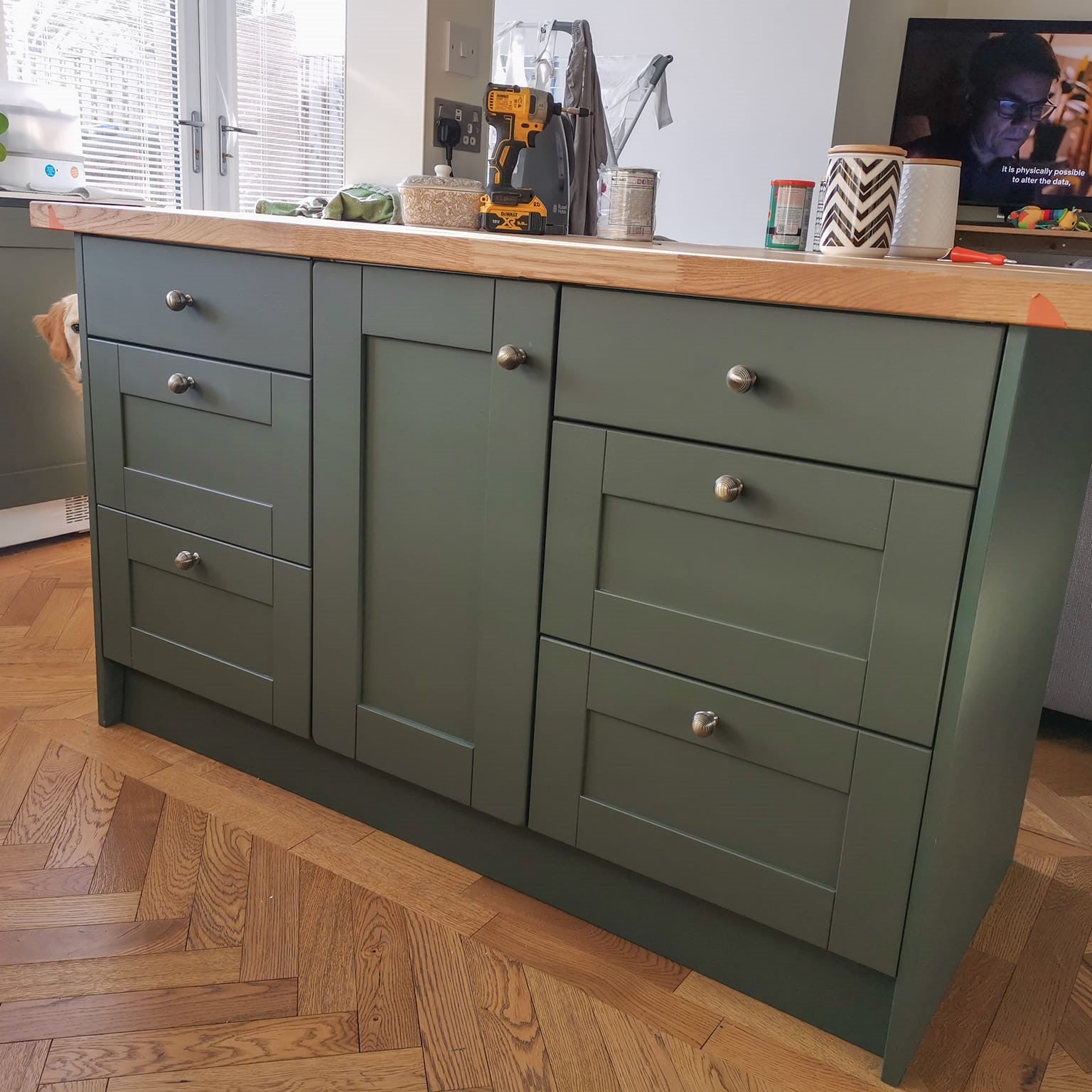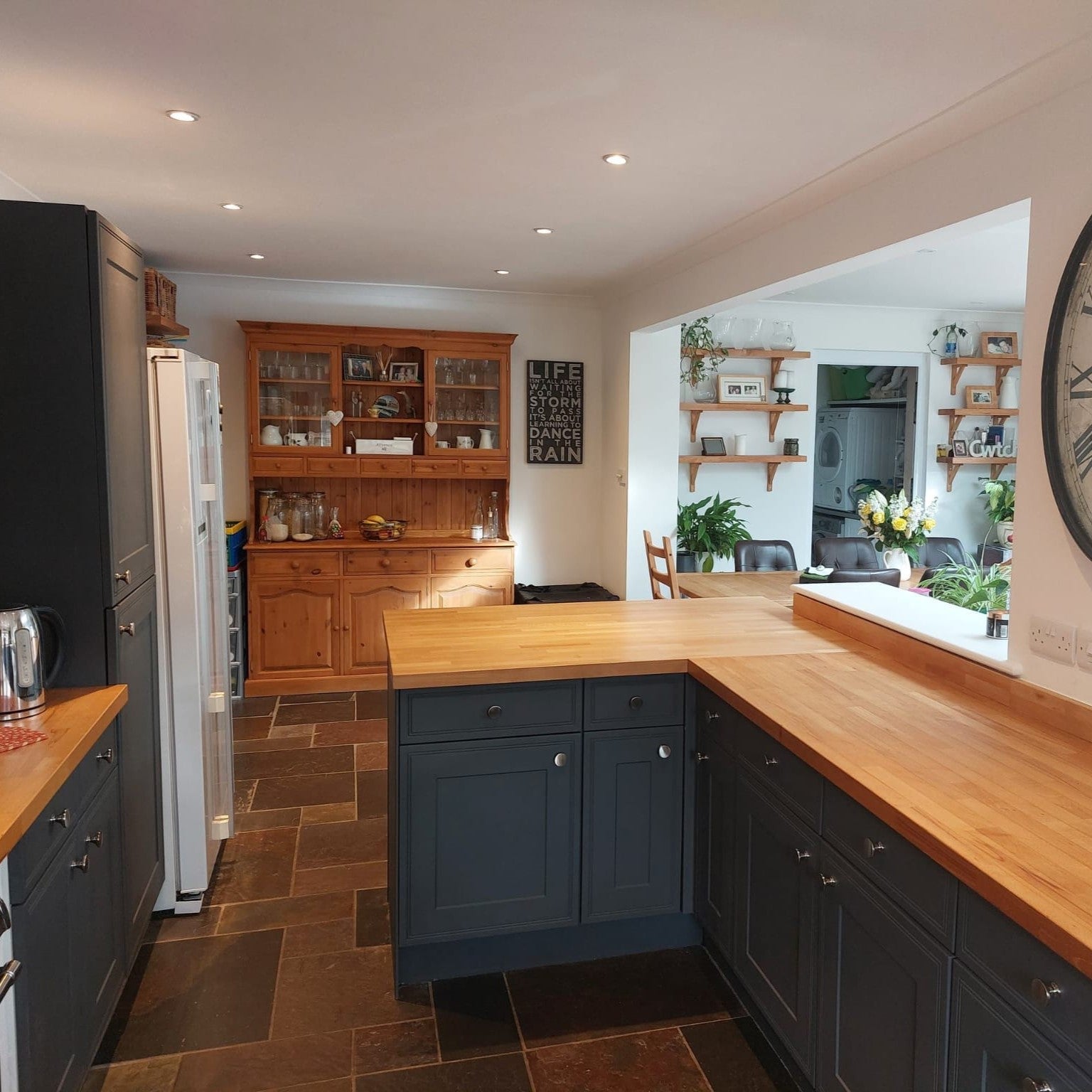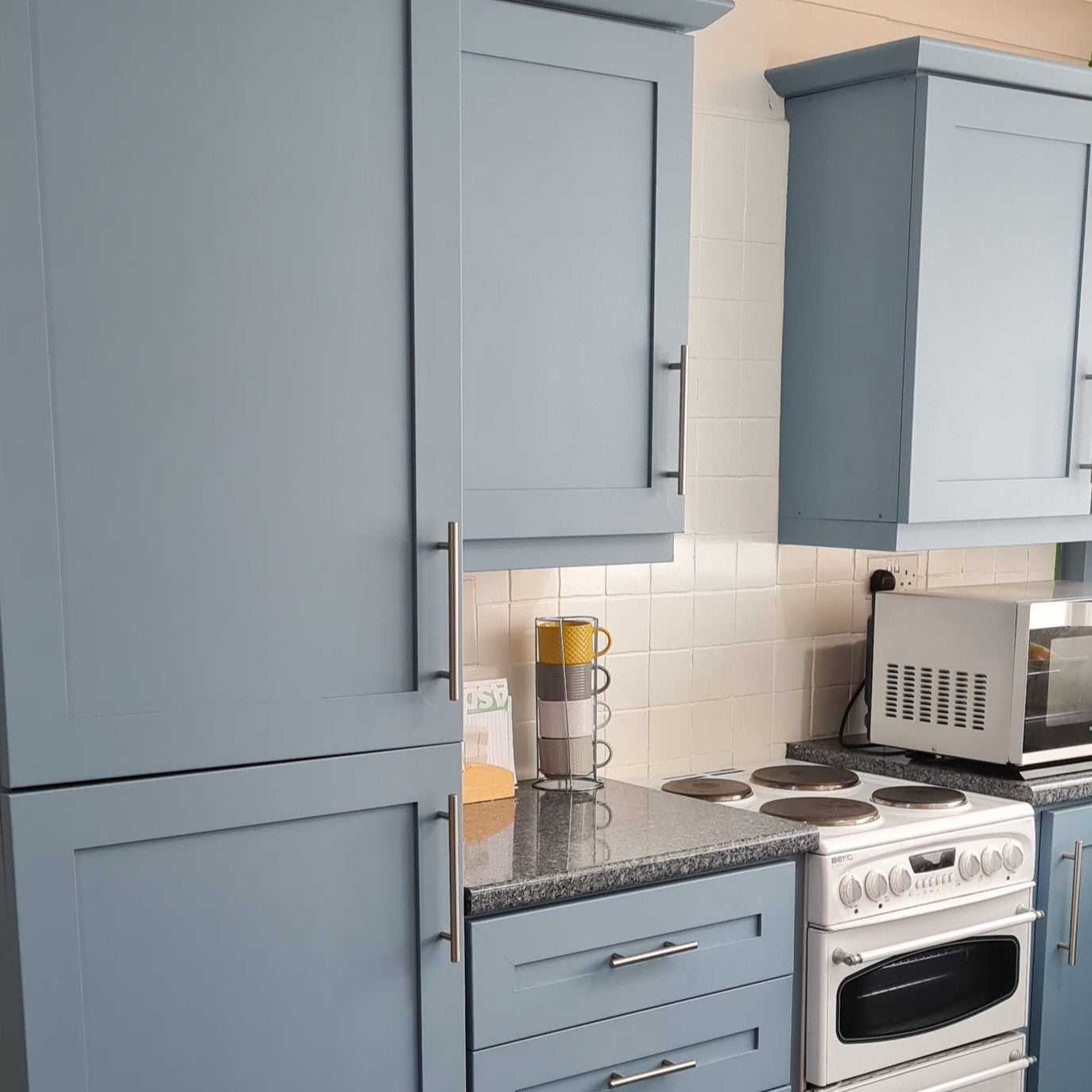Hur förhindrar och åtgärdar jag färg droppar?
Färg droppar kan bildas under nästan vilket målningsprojekt som helst, vare sig det gäller väggar eller möbler.
Alltför ofta upptäcker du dem först när de har torkat, vilket gör det svårare att ta bort dem – och det ökar frustrationen.
Det bästa är att helt förhindra dem. Lite ansträngning och vaksamhet sparar tid senare. Lyckligtvis finns det flera tips och knep för att undvika färgrinn.
I den här bloggen får du instruktioner om hur du kan förhindra färgrinn – och hur du åtgärdar upptäckta rinnmärken.
Hur förhindrar jag färgrinn?
Först och främst är det viktigt att förstå vad som orsakar rinnmärken överhuvudtaget.
De uppstår till exempel när färgen är:
För tunn och rinnig
Färgen appliceras för tjockt
Färgen appliceras ojämnt
Du kan undvika dessa problem när
1. Börja med att röra om färgen ordentligt
Så grundläggande som det låter, gör noggrann omrörning verkligen skillnad – och att skaka burken är inte alls lika effektivt.
Pigmenten i färgen sjunker med tiden till burkens botten, vilket gör att färgen blir tunnare i burkens övre del. Därför är det viktigt att röra om även under längre målningsprojekt några gånger.
Med ett brett verktyg är det bäst att se till att alla ingredienser blandas ända ner till burkens botten. Om du inte vill smutsa ner din bästa linjal, träslev eller annat tillfälligt verktyg, är det värt att investera i en färgblandare som är gjord för ändamålet.
2. Använd torra / knappt fuktiga penslar och rollers
Otorra verktyg kan innehålla oväntat mycket vatten.
Om du använder för blöta verktyg kan vattnet tunna ut färgen, vilket kan leda till att färgen rinner.
Speciellt rollers bör pressas och skakas mycket noggrant torra/knappt fuktiga innan användning – och kontrollera det innan du börjar.
Låt penslarna torka liggande eller hängande med borststråna nedåt så att vatten inte stannar kvar vid metallfästet. Instruktioner för användning och skötsel av penslar och rollers hittar du här.
3. Storleken spelar roll
Att använda en för stor pensel eller roller kan leda till att överflödig färg samlas vid kanterna eller runt kanterna och i fördjupningar.
Detta leder till att färgen droppar, särskilt på ställen som lister, socklar, paneler och där väggar möter trädetaljer. Avgränsa alltid kanterna på de områden som ska målas först med en pensel i lämplig storlek.
4. Lagom med färg
Ett annat toppentips är att undvika att överbelasta penseln eller rollern med färg. Det leder oftast till ojämn täckning, vilket kan innebära att det bildas ränder på väggarna och att droppar samlas runt detaljerade områden.
Speciellt när du målar med roller måste det finnas tillräckligt med färg för att rollern inte ska lämna ränder – prova verktygen innan projektet så hittar du rätt mängd färg för just dina verktyg.
Börja i hörnen och måla utåt med lätt och jämnt tryck i långa drag. Avsluta alltid med långa utjämnande drag.
5. Var vaksam och kika under kanterna
Försök göra det till en vana att kontrollera kanter och lister (och hörn) medan du arbetar, eftersom droppar är lättast att jämna ut innan färgen börjar torka.
Hur jag fixar droppar
Om du märker att droppar har uppstått trots dina försök och du inte kan jämna ut dem med en pensel eftersom de har torkat, är inte allt förlorat än.
Du kan hantera dem framgångsrikt med rätt tillvägagångssätt...
1. Rör inte vid färska droppar
Att försöka stryka bort en dropp eller ojämnhet när färgytan just börjat torka fungerar inte och kan göra ett litet problem mycket större genom att sprida delvis torkad färg.
Låt färgen torka helt – och kom ihåg att detta kan ta längre tid än vanligt eftersom färgen är tjockare vid droppen.
2. Bedöm först
De verktyg du behöver beror på droppens storlek och omfattning samt vilken typ av färg du använder. Hållbarare färger är svårare att arbeta med av uppenbara skäl!
Oavsett vilken metod du använder, försök undvika att skada den omgivande färgen, eftersom det gör att det totala området som behöver åtgärdas blir större.
3. Slipning av små droppar
Om färgdroppen är liten kan du kanske slipa bort den. Prova från fint till medelgrovt sandpapper och se hur det går.
Håll slipriktningen längs droppens längd, inte tvärs över, för att minimera påverkan på den omgivande färgen. Välj en återanvändbar och tvättbar mjuk eller hård slipsvamp för handslipning.
4. Använd skrapa för större droppar
För större eller envisare droppar bör en ren rakbladsskrapa eller liknande räcka. Ta bort så mycket droppe som möjligt och jämna sedan ut resterna med sandpapper – följ återigen defektens längd som ovan.
Om färgen fortfarande är lite klibbig kan det kännas lättare om du låter färgen torka längre innan slipning. Välj en kvalitativ och hållbar skrapa här.
5. Punktmåla det slipade området
Du måste måla om det slipade området. Försök göra detta på samma sätt som det ursprungligen målades för att minimera risken att ytan ser annorlunda ut (vilket drar uppmärksamhet).
Vanligtvis är det bättre att måla om hela området istället för att bara göra en punktlagning. När du har tagit bort slipdammet med en ren, lätt fuktad trasa, använd pensel eller roller efter behov för punktmålning.
6. Använd spackel för djupare repor
Om du märker att borttagning av torkade droppar har lett till repor kan du behöva använda spackel för att jämna ut ytan. Välj ett spackel som passar för den målade ytan (eller en mångsidig produkt).
Förbered området genom att slipa det jämnt innan du applicerar enligt instruktionerna. Slipa lätt igen när spacklet har torkat och måla sedan på nytt på det sätt som beskrivits ovan.
Vissa färger fungerar bäst ovanpå spackel om en grundfärg används. Genom att välja en självhäftande grundfärg behöver du inte oroa dig för vidhäftningen.
Vissa spackel kan dock vara porösa och suga åt sig färg, vilket kan leda till en ojämn yta. Om detta händer kan du behöva slipa lätt igen innan du applicerar ett andra färglager.
Börja alltid med en kvalitetsfärg
Tipsen ovan hjälper dig att förhindra färgdroppar och att reparera eventuella andra misstag.
Utöver dessa knep hjälper det att utgå från en färg av högsta kvalitet.
Från Frenchic-serien kan du välja bland ett brett utbud av vackra nyanser och kvalitetsfärg för möbler, väggar, utomhusprojekt och mycket mer.
Tack vare Frenchic-färgernas egenskaper är förberedelsearbetet och färgrinning minimalt och det är lättare att reparera färgen efter att droppar eller liknande tagits bort.
Detta kröns av ett urval fantastiska färger som säkerställer att ditt projekt ser perfekt ut! Utforska Frenchic-serierna här.
